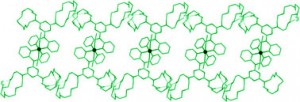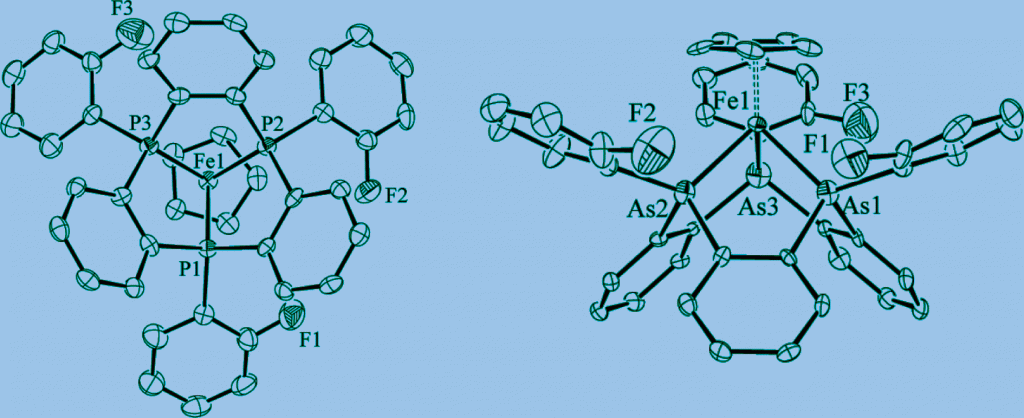Dalton Discussions 13 will be held at the University of Sheffield in September next year. The meeting focuses on Inorganic Photophysics and Photochemistry – Fundamentals and Applications.
The aim of the meeting is to bring together people from a wide range of disciplines – from theory and ultrafast spectroscopy to medicinal chemistry and biology – but all with a shared interest in the use of light.
Dalton Discussions are an excellent forum for scientists to present and discuss their work, allowing an invaluable exchange of views and ideas. Researchers submit their abstracts to the Scientific Committee, then selected authors are chosen to present their work at the meeting. Prior to the meeting the authors submit their work as an article, which is then peer reviewed and circulated amongst the participants. At the meeting itself the author has 5 minutes to summarise their article and then the floor is opened to questions and debate – the real focus of Dalton Discussions.
The call for papers is now open, submit your oral abstract now to be part of Dalton Discussions 13.
Key note speakers:
Professor Majed Chergui, Switzerland
Professor Luisa de Cola, Germany
Professor Richard Eisenberg, USA
Professor Peter Ford, USA
The key themes of the meeting have been identified as solar energy, energy and electron transfer, applications of strongly emissive complexes and bond breaking and isomerisation.
Deadlines:
Oral abstract deadline 9 October 2011
Poster abstract deadline 6 July 2012
Early bird registration deadline 6 July 2012
Standard registration deadline 3 August 2012
Visit the DD13 website for more information.

Comments Off on DD13: Inorganic Photophysics and Photochemistry
 Read the following Dalton Transactions Hot Article to find out which structures of Ru(II) half sandwich compounds are active as possible anti-cancer drugs and why face-capping ligand is all important in combating cancer cells……
Read the following Dalton Transactions Hot Article to find out which structures of Ru(II) half sandwich compounds are active as possible anti-cancer drugs and why face-capping ligand is all important in combating cancer cells……














 In this HOT article, Yuliang Li and coworkers synthesized p–n axial heterojunction inorganic/organic semiconductor nanowire arrays on porous anodic aluminum oxide (AAO) templates via electrochemical deposition. This novel synthesis is based on a common concept of using an AAO template. The electrical properties of the heterojunctions of these organic–inorganic materials were investigated, indicating a diode nature and a rectifying feature. These heterojunction nanowire arrays are at the frontier of the materials field, for next-generation electrical and optoelectronic devices.
In this HOT article, Yuliang Li and coworkers synthesized p–n axial heterojunction inorganic/organic semiconductor nanowire arrays on porous anodic aluminum oxide (AAO) templates via electrochemical deposition. This novel synthesis is based on a common concept of using an AAO template. The electrical properties of the heterojunctions of these organic–inorganic materials were investigated, indicating a diode nature and a rectifying feature. These heterojunction nanowire arrays are at the frontier of the materials field, for next-generation electrical and optoelectronic devices. The formation of peptide or protein aggregates is a common feature of many different forms of neurodegenerative disorders including Alzheimer’s disease, Parkinson’s disease and prion diseases. It is also widely accepted that various metal ions can play a significant role in the conformational changes of these peptides/proteins.
The formation of peptide or protein aggregates is a common feature of many different forms of neurodegenerative disorders including Alzheimer’s disease, Parkinson’s disease and prion diseases. It is also widely accepted that various metal ions can play a significant role in the conformational changes of these peptides/proteins. In this HOT article, Faulkner and co-workers describe the self-assembly between di-carboxylate ions and a binuclear europium compound and some stable adducts and heterometallic lanthanide complexes. The synthetic approach may shed light on the design and synthesis of other new lanthanide architectures by spatial matching the interactions between two kinetically stable complexes or by well designed building blocks.
In this HOT article, Faulkner and co-workers describe the self-assembly between di-carboxylate ions and a binuclear europium compound and some stable adducts and heterometallic lanthanide complexes. The synthetic approach may shed light on the design and synthesis of other new lanthanide architectures by spatial matching the interactions between two kinetically stable complexes or by well designed building blocks.
 A new system, using a solid state catalyst, to remove impurities from petroleum has been developed by US scientists.
A new system, using a solid state catalyst, to remove impurities from petroleum has been developed by US scientists. Read this Dalton Transactions Hot article to find out about how uranium can reductively couple carbon monoxide, an interesting reaction in Fischer-Tropsch chemistry.
Read this Dalton Transactions Hot article to find out about how uranium can reductively couple carbon monoxide, an interesting reaction in Fischer-Tropsch chemistry.